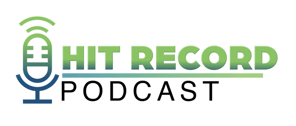Episode 39 - Managing Successful Teams & Communications in the Remote Work Environment


Don't Miss An Episode, Subscribe Now

Are you considering having your bank or credit union marketing team or sales team start to work remotely or already working remotely? If so, you should first assess tools to make sure they have not only what they need but that they know how to effectively use those tools.
Tune in to for best practices on optimizing workflows for your bank or credit union remote teams.
Transcription:
If you're looking for best practices for your bank or credit union, join us while we talk all things sales, marketing, and strategy for financial institutions. Let's make it happen with FI GROW Solutions..
Meredith Olmstead:
Hi there. I'm Meredith Olmstead, CEO and founder of FI GROW Solutions. We are an inbound marketing agency, and we work with banks and credit unions mostly on digital marketing and sales consulting. And I'm here with our chief of strategy, Penne Vanderbush. Say hi, Penne.
Penne Vanderbush:
Hi there.
Meredith Olmstead:
So Penne and I were just having a pretty interesting conversation about some key challenges that we see with communications and somewhat teamwork when people are working in a remote environment. And I was sharing some of these because these were some takeaways that I had from an inbound conference that I attended in Boston with HubSpot back in September.
And I really liked the way that the session structured some of the suggestions, some of the challenges, and I thought it was worth having a conversation and just pressing record to share some of what we were talking about.
So first thing we were really talking about was the loss of human connection in the remote environment. And so, I think it's really, really important to have virtual communications and meetings to make sure you're jumping in and filling some of that void of not being in the same building, or the same office space, or seeing people in passing and building relationships with them. That's obviously, really important and sometimes we take those things for granted. So we wanted to talk about how we deal with some of those things in the remote environment. So Penne, what are your thoughts on that?
Penne Vanderbush:
Well, I think the face-to-face, the visual is definitely important. And so, if you're considering having your marketing team or your sales team start to work remote or if they're already working remote, I would assess tools and make sure that not only do they have the tools they need, but they know how to use the tools that they need.
I know with our team, we happen to use Slack as our chat here, but we can drop in a quick video call directly through that channel and see each other face-to-face. And so, I think if you're considering remote or you are remote, but you want a better experience with that, the face-to-face is really important and you need the tools to do that.
Now, as a regular practice, we definitely don't like meetings for meeting's sake. Meeting fatigue is absolutely a thing, and we push ourselves to make sure that if we are scheduling a meeting, we're very thoughtful about who we're inviting, how long the meeting is, and if an actual meeting is necessary for that. But we really promote, especially within our own agency, like short scrums, a face-to-face. Like, "Let's just get together real quick, talk this out, work on it together, and then exit." That just like you would if you were in a physical office environment where you might pop into someone's office, work through something really quickly, and walk back out. We recreate that scenario through the use of face-to-face and video.
Meredith Olmstead:
Yeah, a couple things I want to just say about that. The first is holding people accountable for using the tools as well. I never get on... It used to be before COVID, honestly, we would try to have video calls, because we always have worked remote. So we would try to have video calls with our clients and they didn't... A lot of them don't even have webcams. It was just kind of like, "Well, it's basically a phone call." You know what I mean?
But now, that's really not the case anymore. And I would say 90% of our clients who get on Zoom calls have webcams. They have it all set up. So I don't let people off the hook when it comes to turning their video on, and I just don't. When I get on a call, like yesterday, I was on a call with somebody new, a client, we were just meeting her for the first time. We started talking, her screen was black and then I said, "Hey, no video?" And she was like, "Oh, I'm sorry, I forgot to turn it on." And she turned it on.
It's such a small little thing and maybe she really did forget, but it makes a huge difference when you're able to do... make that eye contact with somebody, either their body language. And so, I really don't let people off the hook when it comes to any kind of length of meeting and a Zoom call and not having a video. If they're not going to have their video on, they have to justify it, in my opinion. So that's one thing I would say-
Penne Vanderbush:
That's awkward to talk at a black screen or a floating name, right? It's hard for others on the call. And we've heard all the excuses, right? Like, "Oh, my room's messy." Well, there's virtual backgrounds. There's [inaudible 00:04:47]-
Meredith Olmstead:
Yeah, whatever. Make it work.
Penne Vanderbush:
Absolutely.
Meredith Olmstead:
So the other thing that I wanted to say to you about that in terms of meetings is we don't have meetings for meeting sakes for sure. And this idea that I was meeting with somebody else earlier this week and she was telling me that she had nine hours of meetings on Mondays. That was her normal schedule. And I was like, "Wait, what?" I was just like, "I don't even understand how you could come up with nine hours of meetings." I don't understand it.
So I mean, I'll have five clients, I'm at different clients. I might have to touch base within one day and an internal meeting or two. And I still couldn't string it together nine hours of meetings if you forced me to. So this idea that people just meet every Monday for an hour is just... You need to be careful about it.
And the agendas I think are so, so important because frankly, I love to chat and I like to have icebreakers on calls. I do it fairly regularly with clients. Well, we'll have one very clear, crisp, funny, whatever, icebreaker. It can be done in five minutes or so. It's a way to build rapport, fun, trust relationships, but not a time suck.
And I think that that is really important because some people really love to chat, but other people are really guarded and they want their time to be efficiently spent and they're going to feel like if you sit around and shoot the, you know what, for 20 minutes without getting anything accomplished, it feels like a waste of their time and a waste of their day. And you want to respect that.
Penne Vanderbush:
Yeah, absolutely. And I think that there's a fine... Well, some people might call it a fine line. I think it's a pretty broad line between team building and waste of time. So there's a lot of teams who are like, "Oh, well, we're all remote." So that chatter in the first 10 minutes of a meeting is how we have team building. And the challenge with that is that when you have a meeting, especially if you have different stakeholders, different departments, different clients, or vendors, or whoever you have on that call, when you have that mixed bag, there are several people who are probably really busy, have a lot to do, and they don't value that as team building or as face-to-face communication.
So whether it's an icebreaker or we have check-in round questions here for our team, everybody knows to expect it on the call. There'll be one question, everyone goes around and gives a brief answer. You learn something about the team, we have fun with them and then we move on, so that no one feels that there's that wasted time at the beginning of meetings.
So I just want to point out that socializing at the beginning of a meeting shouldn't be considered team building. That should be more intentional and not... Because it feels like a waste of time to others on the call.
Meredith Olmstead:
Yeah, I would say if you're intentional about it, it can be a very useful time, but it doesn't have to be long or lengthy. The other thing about meetings and agendas, I would say, especially when you're involving multiple departments, sharing an agenda prior to the meeting can be really helpful. And also, putting designated time for different meeting agenda items so that people... You're managing everybody's expectations. They know it's not a waste of their time. They know they're going to be addressing something down the agenda. And we've said, "Okay, five minutes for this, 10 minutes for this, 15 minutes for this." That kind of thing.
I think what you said too leads to our next point where we were talking about... When you're thinking about communicating virtually or otherwise, it is really useful to think about who your audience is, because an audience of stakeholders who are trying to make a big decision is very different than an audience of your team members who you're trying to work through a process, or a plan of attack, or whatever.
So making sure, maybe the level of detail that you're going to share with your team when you're putting together next steps is going to be really, really in depth. Whereas stakeholders, they really want you to be succinct, to focus on goals, outcomes, if they have a pain point or something that they're really struggling with, they want you to hear that. They don't want to be gloss over. So really listening to pain points with stakeholders is really important.
And then there's customers that you might be dealing with, and those are people where they really want to know that you know what you're talking about, that you're asking high quality questions, you're not wasting their time and that you're demonstrating real competency.
So I think in your interactions in the remote environment, making sure that you remember who your audience is, is really useful for making sure communications feel meaningful to both parties involved.
Penne Vanderbush:
Absolutely. And understanding that the channel of communication for each of those audiences is going to be different. So if you're managing a project with a team, or a client, or a customer, you might choose to keep all of the notes and details and questions and back and forth in a project management software tool so that when someone pulls up the task or item, everything is right there and neatly documented.
It's very difficult, especially with multiple people across multiple teams to rely on email for that. So you're digging through email who said what? Someone got cut off the email chain. But your stakeholders or the people who need to approve something, maybe approve a milestone in that project to move forward or need status updates on that might prefer email for that communication because that's what works for them. And then as your team is working on a task, they might prefer a chat channel to quickly bounce ideas off of one another.
So along with identifying the audiences, I think it also matters that you identify the channel that works for that audience and make sure that it works for them. Not just let them know, "Hey, I'm going to be chatting with you via a chat or messenger platform, so expect that." It might be more beneficial to have a conversation and say, "When I'm giving you these project updates, do you prefer that in an email? Or do you prefer that in a chat? Or do you want to jump into the project management software tool and look at the overview area? And I can provide a summary there for you, what works for you?" Because likely, it's going to be different for each of those audiences.
Meredith Olmstead:
Yeah. The other thing I will say about channels that we've definitely... We're very, very clear and intentional about FI GROW, and also, I think with our clients is which channels you should expect? What kinds of responses and in what timeframe?
So I tell my team and I tell people when I talk to them, if I'm interviewing somebody or something for a possible position, I'll tell them, "I find it to be a red flag when you send an email and someone responds really, really quickly." Because for us internally, we discourage our team from doing a ton of multitasking because it can breed inefficiency and pull you away, pull your focus away from doing a high-quality deliverable, delivering something that's really good.
So we try to push emails to a 24-hour response time and we will have our Slack channel that'll be open, but it's not emergency. So if you're engrossed in a project and your Slack channel is over here, don't have it dinging and pulling you away from your project or your task over and over and over again or your call that you're on. Really the emergency communication is text. That's how we run it at our agency.
Even if we're at our desk, if I need to get you and you don't respond to a quick message on Slack and I really need to hear from you, I don't get mad and blow up your Slack, I text you. You know what I mean? So it's just knowing what channels are for what.
Penne Vanderbush:
Absolutely. And I think if you're in a leadership role and you manage a remote team, or you're considering having your team being remote, this is really important because I have spoken with people who feel obligated between the hours of 8:00 and 5:00 to respond to email and chats as quickly as possible out of fear that they'll be perceived that they're doing laundry or walking their dog or something that's not work-related.
And what happens is with that immediate response expectation that they're not productive, they're constantly getting pulled away from things or they're in a meeting and they're not giving the meeting their full attention because they're trying to respond to these other people-
Meredith Olmstead:
Distracted.
Penne Vanderbush:
... and worried about the perception of how they're spending their time. So it's really important that you're honest, transparent, and open with your team about those expectations and that your team understands that they shouldn't expect their peers to be immediate response. Because anytime you have immediate response, it's very difficult to also have productivity.
And so, managing that I think really helps. The other thing I will say about the communication is understanding certain channels and certain communications, especially when you're remote, should remain professional. You want to exude confidence with clients or other stakeholders about your ability to work remotely and the quality of the work that you're producing. But within that, it is incredibly hard to always understand somebody's tone or what they mean when you're just reading black and white words on a screen. And so, we encourage the use of emojis and GIFs and whatever that may be to lighten-
Meredith Olmstead:
To lighten the mood a little, yeah.
Penne Vanderbush:
Yeah, and to really show, I'm asking this question maybe because I'm confused, not because I'm angry. And a simple emoji can help somebody understand that you're like, "Oh, she's just confused. She can't find what she's looking for, or she doesn't understand what I'm trying to say. She didn't comprehend what I said and now is angry about what I've said."
And so, I know that some people feel really hesitant to utilize GIFs, and memes, and emojis in a work channel or on a work computer. And I find them to be incredibly helpful. And when we work on projects with credit unions and banks, a lot of these major projects, like when we're building a new digital branch, a new website for our client and in our own project management software, we start utilizing emojis. It's amazing how quickly they start doing it too, because it's like, "Oh, I can communicate this way." And I think that really, really helps the project and helps with that communication.
So I would encourage it. Whether you encourage it or just simply allow it, just make sure it's clear with the team when it's appropriate when it's not-
Meredith Olmstead:
And when it's not, yeah.
Penne Vanderbush:
... but let them know it's okay, even though it's a work computer or a work channel to throw a smiley face in or something every now and then.
Meredith Olmstead:
Yeah, awesome. Awesome. Well, I think these are great tips. I think it's really useful to think about and especially just making sure that we're really being intentional, but also positive and fun. Kind of like bringing the human side of people out even in that remote environment.
All right, awesome. Thank you so much, Penne. This has been great. And if you all have any other interest in our podcast, please visit us at figrow.com. We have a lot of great topics that we cover there for marketing, for banks and credit unions. So otherwise, let's just all get out there and make it happen.








Blog comments